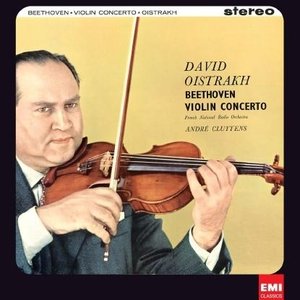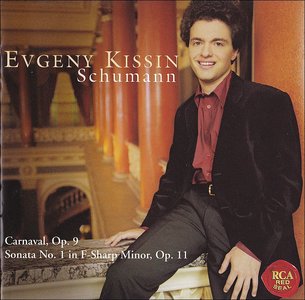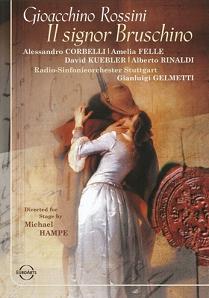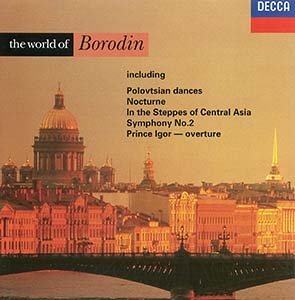источник- http://avaxhome.ws/music/classical/Schumann_Sonata_Carnaval_Evgeny_Kissin.html
Домой Журналы Открытки Страницы истории разведки Записки бывшего пионера Люди, годы, судьбы...

1 2 3 4 5 6 7 8 9 10 11 12 13 14 15 16 17 18 19 20 21 22 23 24 25 26 27 28 29 30 31 32 33 34 35 36 37 38 39 40 41 42 43 44 45 46 47 48 49 50 51 52 53 54 55 56 57
Гостевая книга Форум Помощь сайту Translate a Web Page
Золотой альбом.
Огинский.

David Oistrakh is considered the
premiere violinist of the
mid-twentieth century Soviet Union.
His recorded legacy includes nearly
the entire standard violin repertory
up to and including Prokofiev and
Bartók. Oistrakh's violin studies
began in 1913 with the famed teacher
Pyotr Stolyarsky. Later he
officially joined Stolyarsky's class
at the Odessa Conservatory,
graduating in 1926 by playing
Prokofiev's First Violin Concerto.
Performances of the Glazunov
Concerto in Odessa and Kiev in 1927,
and a 1928 debut in Leningrad (Tchaikovsky
Concerto) gave Oistrakh the
confidence to move to Moscow. He
made his premiere there in early
1929, but the event went largely
unnoticed. In 1934, however, after
several years of patiently refining
his craft, Oistrakh was invited to
join the Moscow Conservatory,
eventually rising to the rank of
full professor in 1939.
Meanwhile, Oistrakh was gaining
success on the competition circuit,
winning the All-Ukrainian contest in
1930, and the All-Soviet competition
three years later. In 1935 he took
second prize at the Wieniawski
competition. In 1937 the Soviet
government sent the now veteran
violinist to Brussels to compete in
the International Ysaÿe Competition,
where he took home first prize.
With his victory in Brussels, Soviet
composers began to take notice of
their young compatriot, enabling
Oistrakh to work closely with
Miaskovsky and Khachaturian on their
concertos in 1939 and 1940,
respectively. In addition, his close
friendship with Shostakovich led the
composer to write two concertos for
the instrument (the first of which
Oistrakh played at his, and its,
triumphant American premiere in
1955). During the 1940s Oistrakh's
active performing schedule took him
across the Soviet Union but his
international career had to wait
until the 1950s, when the political
climate had cooled enough for Soviet
artists to be welcomed in the
capitals of the West.
The remaining decades of Oistrakh's
life were devoted to maintaining the
highest possible standards of
excellence throughout an exhausting
touring schedule (he returned to the
U.S. six times in the 1960s), and he
began a small but successful
sideline career as an orchestral
conductor. His death came suddenly
in Amsterdam in 1974, during a cycle
of Brahms concerts in which he both
played and conducted. Oistrakh's
unexpected death left a void in the
Soviet musical world which was never
really filled.
Throughout his career David Oistrakh
was known for his honest, warm
personality; he developed close
friendships with many of the leading
musicians of the day. His violin
technique was virtually flawless,
though he never allowed purely
physical matters to dominate his
musical performances. He always
demanded of himself (and his
students) that musical proficiency,
intelligence, and emotion be in
balance, regardless of the
particular style. Oistrakh felt that
a violinist's essence was
communicated through clever and
subtle use of the bow, and not
through overly expressive use of
vibrato. To this end he developed a
remarkably relaxed, flexible right
arm technique, capable of producing
the most delicate expressive nuances,
but equally capable of generating
great volume and projection.
| About the Mastering: Four engineers at Abbey Road Studios in London have remastered these historic EMI recordings from their original analogue sources for release in pristine hi-def. Between them, Simon Gibson, Ian Jones, Andy Walter and Allan Ramsay have many years of experience remastering archive recordings for EMI and other record labels. The process always starts with finding all of the records and tapes in EMI's archive in London and comparing different sources and any previous CD reissues. We consult each recording's job file, which contains notes about the recording made by the engineer and producer. For example, this sometimes explain why there is more than one set of tapes to choose from. All of the tapes are generally in good condition and we play them on our Studer A80 π inch tape machine, after careful calibration of its replay characteristics. In order to have the best digital remastering tools at our disposal for the remastering, we transfer from analogue to the digital domain at 96 KHz and 24-bit resolution using a Prism ADA-8 converter and capture the audio to our SADiE Digital Audio Workstation. |
” |
источник- http://avaxhome.ws/hraphile/smasters/david_oistrakh__beethoven_violin_concerto_2496hdracks.html
Schumann - Sonata No. 1, Op. 11 & Carnaval, Op. 9 - Evgeny Kissin (2002) [REPOST]
Schumann - Sonata No. 1, Op. 11 &
Carnaval, Op. 9 - Evgeny Kissin (2002) [REPOST!]
EAC+LOG+CUE | FLAC (image) | 1 CD | RAR
size: 288 MB | scans @ 600dpi | TT 60:00
| RS/FP/OR
Classical | Released: 2002 | RCS Red
Seal/ BMG | Catalog # 63885
Evgeny Kissin has made brave choices in
selecting this program. Schumann's
Sonata No. 1 is a huge, sprawling piece,
difficult to play and to hold together
and therefore not very popular. Carnaval
is one of Schumann's acknowledged
masterpieces and has been recorded by a
wide variety of pianists, providing
plenty of competition. In the Sonata,
Kissin's performance is a complete
success. He has the largeness of spirit,
powers of organization, and huge
technique to make the music convincing
and hold the listener's interest for
more than half an hour. Carnaval is not
quite so successful, as the pianist's
fingers occasionally run away with him
in rapid sections, and they become
technical rather than musical events.
Repeated listenings, though, reveal how
well Kissin characterizes most of the
music and how well his attention to
detail ensures that we hear Schumann's
ideas and countermelodies clearly. If
the whole disc doesn't quite score A+,
it's still very much worth hearing,
especially for those Schumann lovers who
don't know the Sonata well. - Leslie
Gerber
Tracklist:
Piano Sonata No. 1 in F sharp minor ("Grosse
Sonate"), Op. 11
01. Introduzione (un poco Adagio);
Allegro vivace 11:15
02. Aria: Senza passione, ma espressivo
3:36
03. Scherzo ed Intermezzo: Allegrissimo
4:26
04. Finale: Allegro un poco maestoso
11:59
Carnaval for piano, Op. 9
05. Préambule 2:08
06. Pierrot 1:09
07. Arlequin 1:01
08. Valse noble 2:08
09. Eusebius 2:09
10. Florestan 0:54
11. Coquette 1:33
12. Réplique 0:55
13. Papillons 0:41
14. A.S.C.H. / S.C.H.A. (Lettres
dansantes) 0:52
15. Chiarina 1:29
16. Chopin 1:18
17. Estrella 0:27
18. Reconnaissance 1:40
19. Pantalon et Colombine 0:52
20. Valse allemande 0:55
21. Paganini 1:11
22. Aveu 1:09
23. Promenade 2:24
24. Pause 0:15
25. Marche des "Davidsbündler" contre
les Philistins 3:20
Info:
Produced by Jay David Saks
Recording Engineer: Mike Hatch
A&R Directions: Dolly Williamson
Editing: Marc Stedman
Recorded at SWR-Studio, Freiburg,
Germany
Recorded in 24 bit/ 96 kHz technology
July 31, August 1 & December 27, 2001
источник- http://avaxhome.ws/music/classical/Schumann_Sonata_Carnaval_Evgeny_Kissin.html
| “ |
 Rossini
- Il signor Bruschino (Gianluigi
Gelmetti, Alessandro Corbelli,
David Kuebler) [2006] Rossini
- Il signor Bruschino (Gianluigi
Gelmetti, Alessandro Corbelli,
David Kuebler) [2006] NTSC 4:3 (720x480) VBR | Italiano (LPCM, 2 ch); (Dolby AC3, 6 ch); (DTS, 5 ch) | 6.53 Gb (DVD9) Classical | Label: EuroArts | Sub: Italiano, English, Deutsch, Francais, Espanol | 98 min | +3% Recovery
Stage director Michael Hampe
gives us the opera at the time
and location of its original
setting—and it’s momentary cause
for ironic reflection just how
seldom that happens these days.
The result, aided and abetted by
a fine cast, is an attractive,
energetic production of
Rossini’s one-act farce. Amelia
Felle and David Kuebler deliver
the best singing, alert and
stylish, with excellent
coloratura. Alessandro Corbelli
can’t command their facility at
fast speeds (though he gets
better at this as the
performance wears on), but he
supplies an object lesson in
character acting. His opening
scene—having his hair curled
with coal-heated irons, briefly
examining his breakfast, viewing
each of his servants personally
as he expresses his philosophy
on life—is a thing of joy in its
miniscule attention to detail
and shifting expressions.
Performer:
Gaudenzio - Alessandro Corbelli Sofia – Amelia Felle Bruschino padre – Alberto Rinaldi Bruschino figlio – Vito Gobbi Florville – David Kuebler Un commissario di polizia – Oslavio di Credico Filiberto – Carlos Feller Marianna – Janice Hall Radio-Sinfonieorchester Stuttgart Conductor - Gianluigi Gelmetti Directed for Stage by Michael Hampe источник- http://www.avaxhome.ws/music/music_video/concerts/Rossini_Il_Signor_Bruschino_Gelmetti_Corbelli_Kuebler.html |
” |
